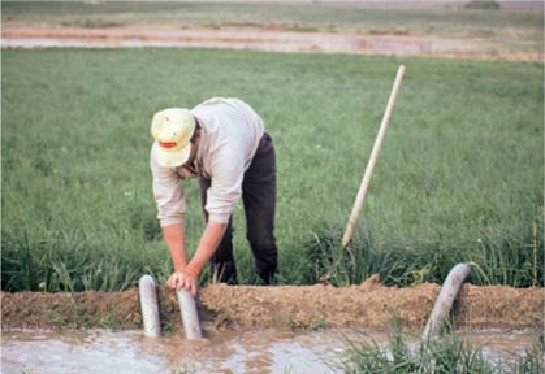Agriculture Reference
In-Depth Information
Irrigationwaterandequipmentareexpensive,andirrigatingislabor-intensive,butit
greatly increases yield.
The moisture that is required to grow good hay can also contribute to its demise. Al-
though hay grows quickly in rainy country, it may be difficult to find a gap in the weather
pattern big enough to allow harvesting and baling. Dry, sunny regions with adequate irrig-
ation water are great hay-growing areas.
WEED CONTROL
A weed is sometimes defined as a plant out of place. Not all weeds are bad—some are
fine additions to a horse's diet, being palatable and containing higher crude protein than
grasses and higher trace elements than legumes. Such safe and good weeds include dan-
delion, buckhorn plantain, chicory, kochia, and lamb's-quarters.
Some plants, while not bad, compete vigorously with desirable grasses and are either
unpalatable or of poor nutritional quality. Examples are downy bromegrass (cheatgrass),
ironweed, horseweed, and willows.
Other plants, while not poisonous, are considered bad because they have a harmful
mechanical effect on horses and they displace good grasses. This category would include
plants such as foxtail, thistle, and others that cause lacerations and sores in the mouth. Bur-

